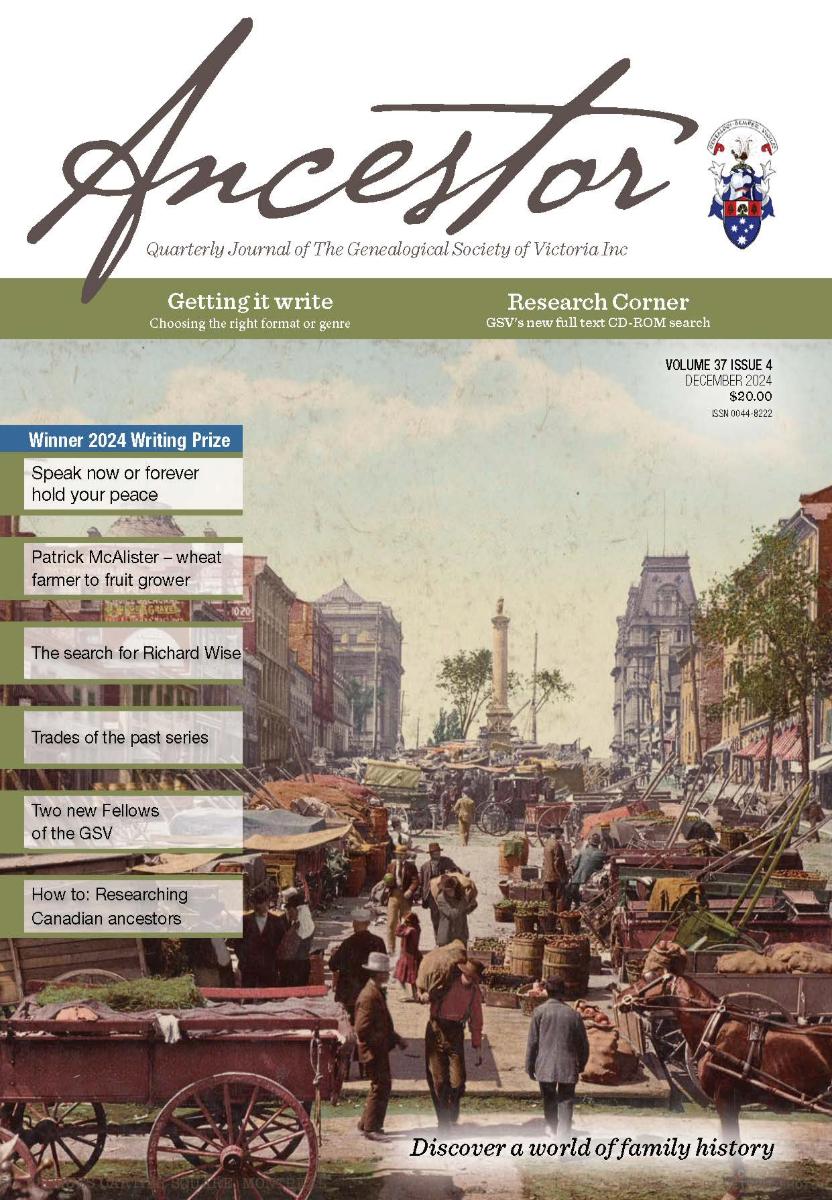
How many times do you read a newspaper or book and pick up inconsistencies? How does it make you feel about the publication? It’s not just grammar, spelling and punctuation that are important.
Author guidelines help to make writing consistent (especially when there are multiple contributors as is the case with the GSV Ancestor journal). Without an agreed approach to the expression of numbers, dates, addresses and use of capital letters, the publication looks less professional.
Guidelines for references are more complex but essential to standardise the way that authors cite sources of information. The GSV Ancestor team has carefully developed, and recently updated, referencing guidelines that aim to provide the information a reader needs, while not taking up too much page space. These can be accessed online at
GSV author guidelines.
The new additions include referencing vital records such as births, deaths and marriages (BDMs) and church records, as well as clarification about referencing websites and blogposts.
Consulting these guidelines is recommended before you start writing, particularly if you are considering entering the 2025 GSV Writing Prize competition that opens this week, or submitting an article to Ancestor.
Less ragged, now, and significantly more readable.
Subtle changes make a big difference.
What did you do to make the line breaks more comfortable, and how did you make the 'GSV author guidelines' link use a smaller font ?


Are there guidelines about the formatting of posts to this blog ?
As viewed on the GSV website, the present post actively resists being read.